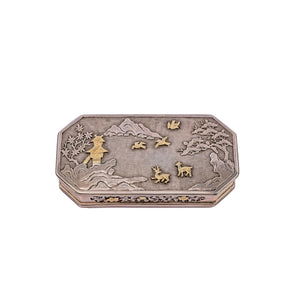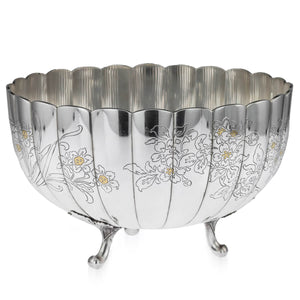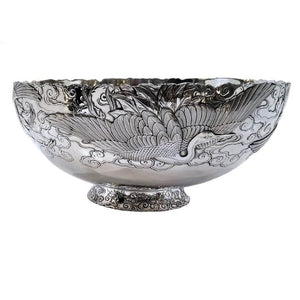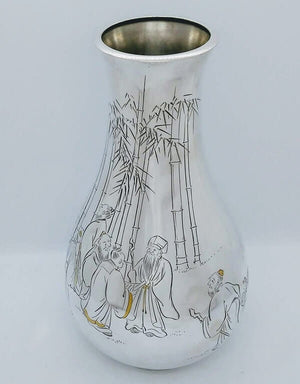Prior to the ‘opening of Japan’ to the West by American Commodore Matthew Perry in 1854, the country had spent 250 years in self imposed isolation. No Japanese person could leave Japan and no foreigner enter. The only exception was a small Dutch trade delegation in Dejima, an offshore island, with permission to negotiate trade deals. By 1904, a mere fifty years later, Japan had undergone a series of changes which transformed it from a technologically backward and inward- looking feudal nation into a technologically modern nation and a world power.
In 1868, after a period of intense turbulence and political upheaval, control of the whole of Japan fell under the hands of the young Emperor, Meiji. By 1876, the Samurai class had been abolished and they were no longer allowed to carry swords. Demand for armour and swords ceased overnight, the mainstay of the very gifted metalworkers, who struggled to survive.
In 1862, at the second London Exposition or World Fair, Rutherford Alcock, British diplomat to Japan, displayed his collection of Japanese objects. At the second Paris Exposition of 1873 the Japanese opened a tea house and displayed some objects. As in London, nothing was for sale. The Japanese government recognised the potential the World Fairs offered them: an opportunity to learn about the latest technological developments and a marketplace to sell their traditional crafts and negotiate trade deals; thereby generating income and reshaping the world’s opinion of Japan. Before participating in the 1873 Vienna International Exposition, they assembled a large collection of high-quality goods which were very well received and sold. European interest in all things Japanese rocketed. Through excellent planning, funding, design and preparation, this success was replicated and amplified at other World Expositions, particularly those held in Philadelphia, Chicago and Paris. Japonisme was all the rage! Trade deals were arranged and the opening of consular offices followed.
The arts were supported by the Japanese government through the Kiritsu Kosho Kaisha which commissioned work from artists in all branches of the decorative arts, supporting the sharing of ideas and practicalities, such as design drawings. The metalworkers directed their talents towards objects which would appeal to the West. They provided objects in the Japanese style that the West craved, with articles to suit a range of budgets, whilst still maintaining their exacting standards. The metalworkers, skill and technical ability were outstanding, probably the finest the world has ever seen. They produced alloys of metals in a range of colours such as shakudu and shibuichi. Made hand hammered silver with high relief ornament, applied other metals to silver objects, laminated metals together to produce mokume gane, a decorative finish. They produced enamelled silver, married sheets of different metals together, ornamented bronzes with gold, copper and silver inlay using a variety of specialist techniques known as zogon inlay. Their ability and artistry delighted the rest of the world and Japanese metalwork became profoundly influential.



